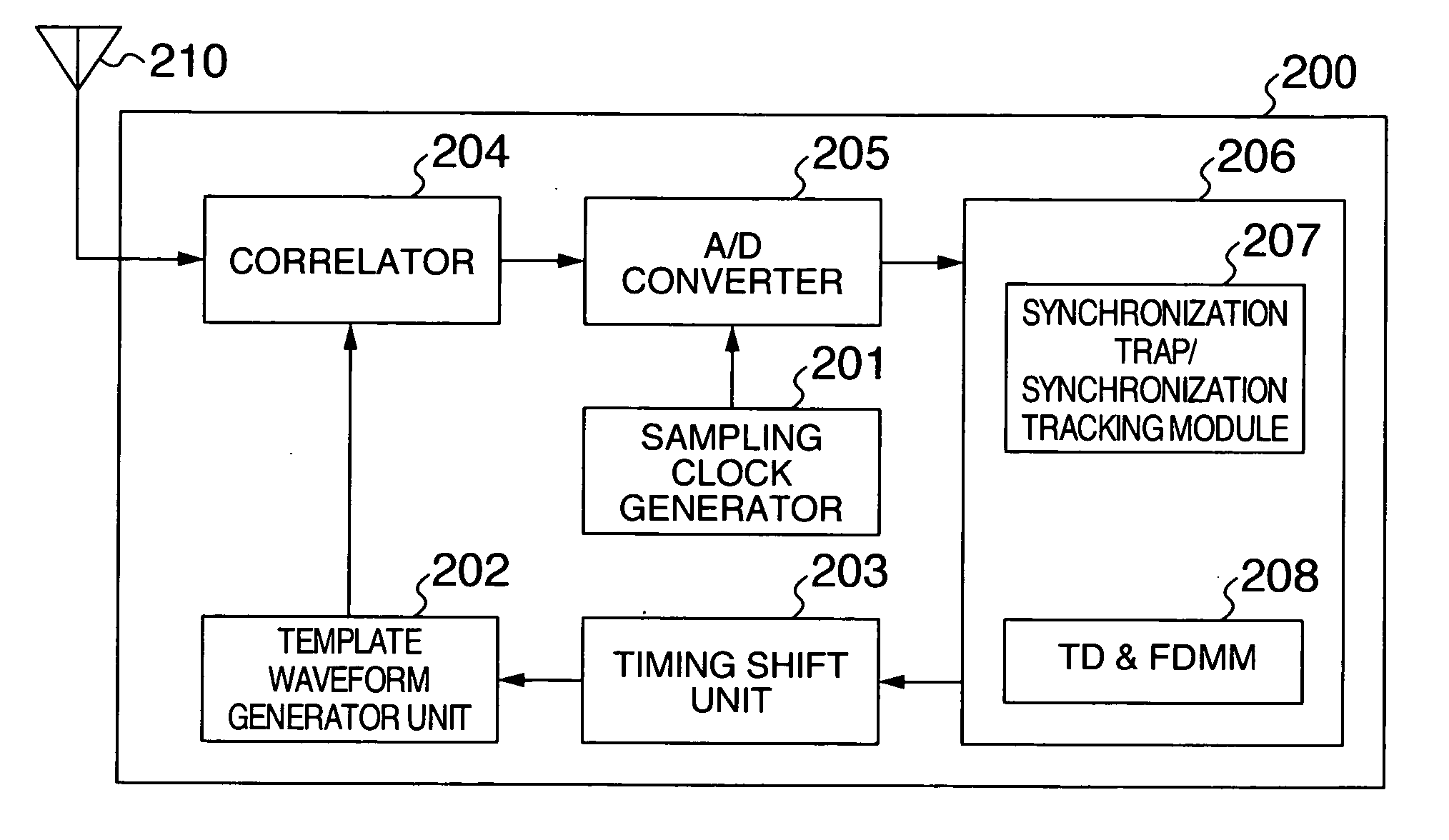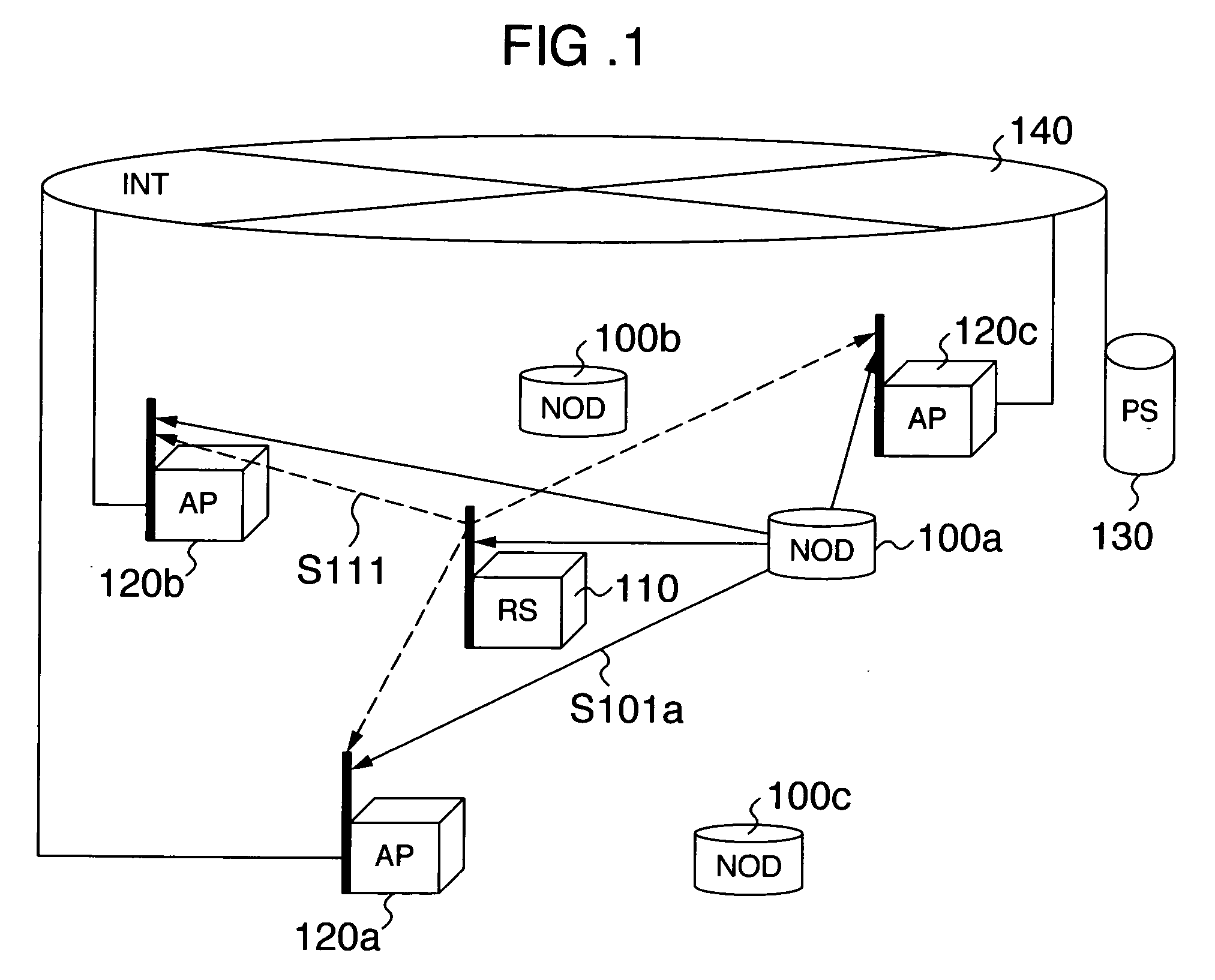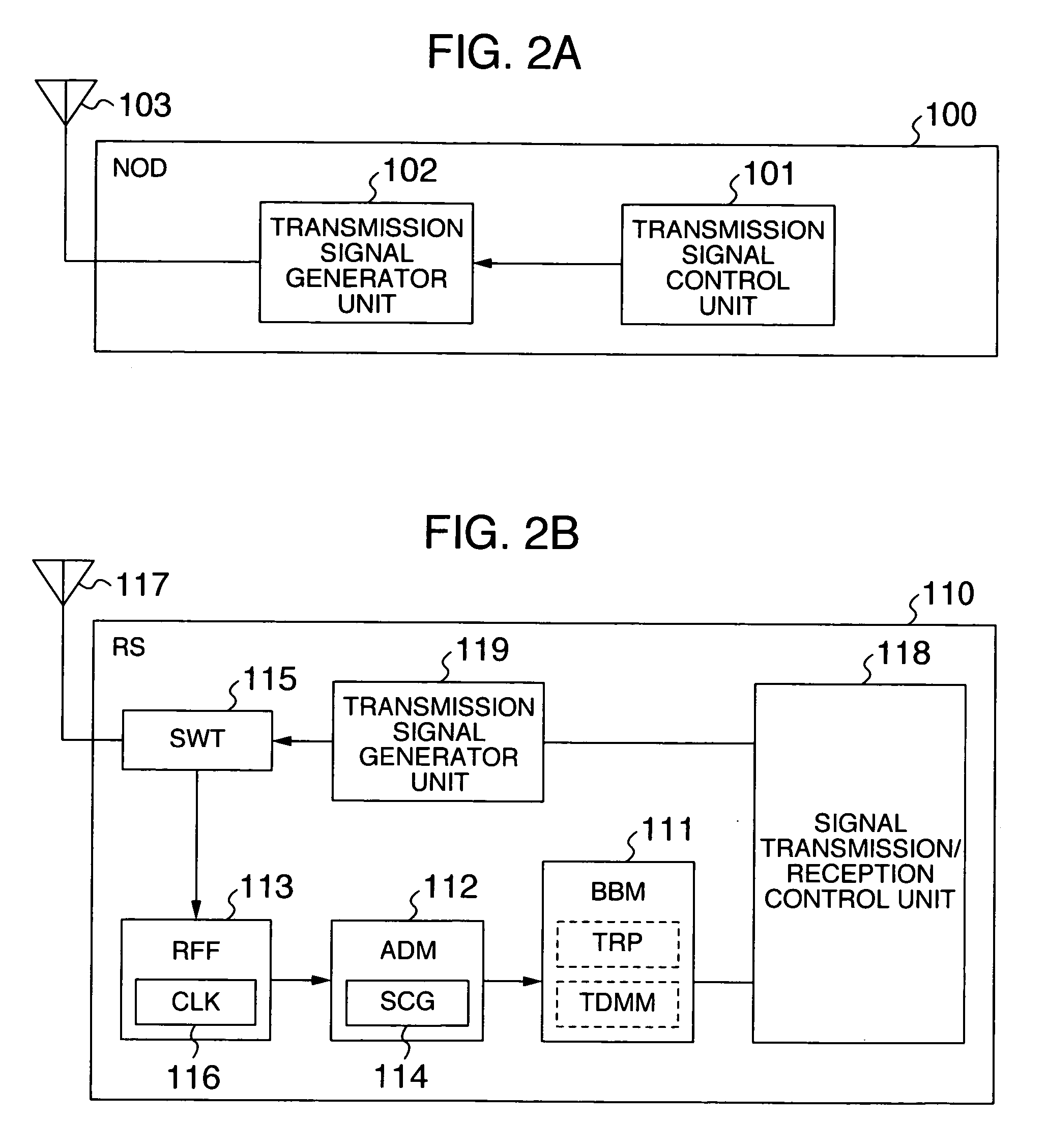Receiver, frequency deviation measuring unit and positioning and ranging system
a technology of measuring unit and receiver, which is applied in the direction of multi-frequency-changing modulation transference, instruments, transmission monitoring, etc., can solve the problems of low accuracy in ranging, inability to identify the position of the transmitter, and inability to cause errors in ranging, so as to reduce power consumption, size and cost, accurate time difference
- Summary
- Abstract
- Description
- Claims
- Application Information
AI Technical Summary
Benefits of technology
Problems solved by technology
Method used
Image
Examples
first embodiment
[First Embodiment]
[0041] A receiver according to a first embodiment of the present invention, and a positioning / ranging system using the same will be described with reference to FIGS. 1 to 12. First, the configuration and operation of the system in the first embodiment will be outlined with reference to FIGS. 1 to 3.
[0042]FIG. 1 illustrates the configuration of the positioning / ranging system according to the first embodiment of the present invention. The positioning / ranging system comprises a plurality of nodes (NOD) 100 (100a, 100b, . . . ) (which are intended for positioning) each for transmitting a positioning signal; a reference station (RS) 110 for transmitting a reference signal; a plurality of access points (AP) 120 (120a, 120b, 120c) each for receiving the positioning signal and reference signal; a positioning server (PS) 130; and a network (INT) 140 for interconnecting the respective access points 120 and positioning server 130. It should be noted that the suffixes a, b, c...
second embodiment
[Second Embodiment]
[0123] Next, a frequency deviation measuring unit for measuring and reducing a clock error between access points according to a second embodiment of the present invention will be described with reference to FIGS. 13 to 15.
[0124] In the first embodiment of the present invention described above, the reception time difference Tmeas measured by the access point 120 includes an error due to the accuracy of the clock frequency.
[0125] The positioning server 130 calculates the position of the node 100 in accordance with Equation (2) using the reception time differences Tmeas measured by a plurality of access points 120. When a clock error is taken into consideration, the second term on the right side of Equation (2) is: Tmeas,a-Tmeas,b=Treal,a·(1+δa)-Treal,b·(1+δb)=Treal,a-Treal,b+(Treal,a·δa-Treal,b·δb)(4)
resulting in an error (Treal,a·δa+Treal,b·δb), where Treal,a, Treal,b represent real times which should be measured by the access points 120a, 120b, respectively,...
third embodiment
[Third Embodiment]
[0139] Next, a third embodiment of the present invention will be described with reference to FIGS. 16 to 19. A receiver of this embodiment comprises the function of the frequency deviation measuring unit in the second embodiment added to the receiver of the first embodiment. FIG. 16 is a diagram illustrating the configuration of a baseband module 440 which comprises a time difference measuring function and a deviation measuring function. FIG. 17 is a diagram illustrating an exemplary configuration of a time difference / frequency deviation measurement module (TD&FDMM) 1310.
[0140] In FIGS. 16 and 17, the time difference / frequency deviation measurement module (TD&FDMM) 1310 is applied with a sampling clock S435d, sampling timing control signals S441, S442, an SFD detection signal S551, and a data end signal S552, and outputs a measured time difference S444a and deviation S444b.
[0141] The time difference / frequency deviation measurement module 1310 comprises counters 6...
PUM
 Login to View More
Login to View More Abstract
Description
Claims
Application Information
 Login to View More
Login to View More - R&D
- Intellectual Property
- Life Sciences
- Materials
- Tech Scout
- Unparalleled Data Quality
- Higher Quality Content
- 60% Fewer Hallucinations
Browse by: Latest US Patents, China's latest patents, Technical Efficacy Thesaurus, Application Domain, Technology Topic, Popular Technical Reports.
© 2025 PatSnap. All rights reserved.Legal|Privacy policy|Modern Slavery Act Transparency Statement|Sitemap|About US| Contact US: help@patsnap.com



